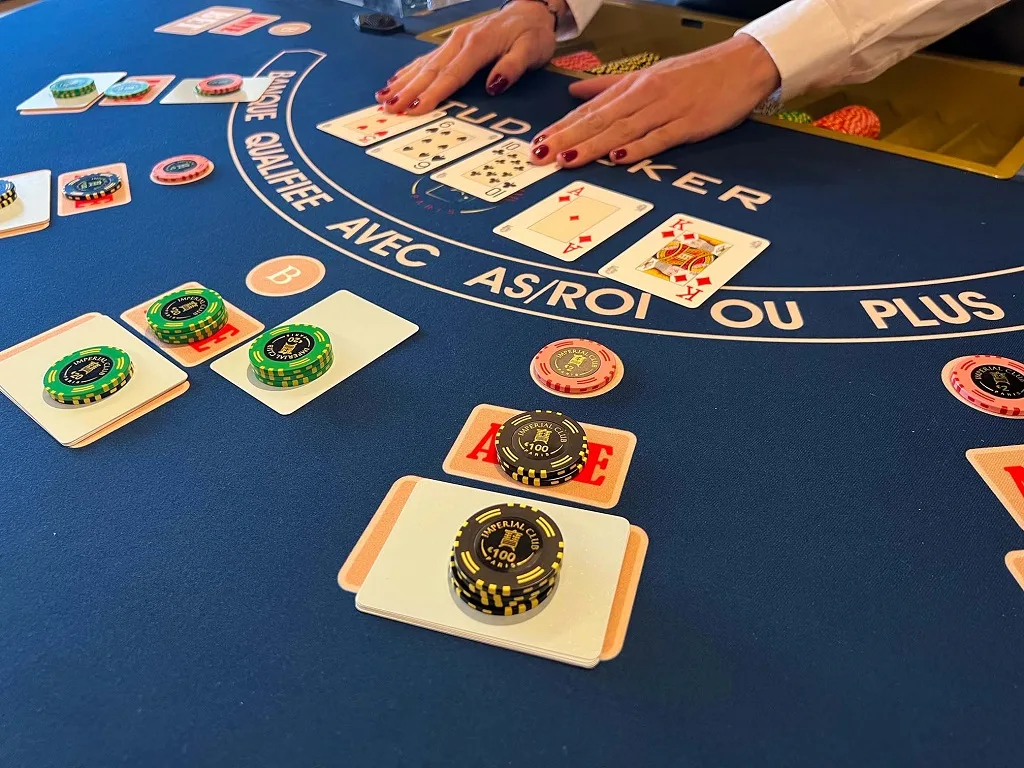Stud Poker: A Guide for Beginners

Stud Poker, a popular variant in the family of poker games, distinguishes itself by the absence of draw cards and shared community cards. Each player receives a combination of face-down (hole cards) and face-up cards over multiple betting rounds. Traditionally, games range from five-card to seven-card versions, with Seven-card Stud being the most played among enthusiasts. The game starts with each player placing an ante, followed by receiving a mix of face-down and face-up cards. Betting rounds intersperse the dealing of additional face-up cards, making strategic decision-making based on visible and hidden information a core part of gameplay.
The intrigue of Stud Poker lies in its balance of known and unknown elements. Players must make calculated decisions based on partial knowledge of their opponents’ hands. The visible cards act as a double-edged sword: they provide clues to the strength of other players’ hands but also expose one’s strategy to others. This dynamic makes Stud Poker a game of skill, psychology, and probability, appealing to those who enjoy complex strategy and direct competition.
Key Features of Stud Poker
Stud Poker is characterized by its fixed betting limits, typically structured in increments called “small bets” and “big bets.” This format regulates the betting pace and size, crucial for strategic depth and bankroll management. Unlike No-limit Hold’em, where players can bet any amount, Stud’s structured betting limits dictate a more controlled and methodical gameplay.
Another notable feature is the “bring-in,” a forced bet by the player showing the lowest face-up card in the initial round. This element adds a layer of forced action, ensuring that each hand has a dynamic start. Moreover, the absence of community cards directs players to focus more intensely on their opponents’ upcards, adjusting their strategies based on the changing information available throughout the hand.
The game also includes a fascinating aspect called the “door card,” the first face-up card dealt to each player. This card is pivotal in shaping early game strategies and can often determine the initial direction of betting. High-value door cards can suggest strong starting hands, influencing the betting behavior of the entire table.
Strategies: The Complexity Unveiled
Mastering Stud Poker requires an acute awareness of opponent behavior and an ability to remember discarded cards. This memory element is unique to Stud, as it can significantly influence the game’s outcome by helping a player assess the odds of certain cards still being in play. Successful players often exhibit a keen sense of observation and a sharp memory, traits that can turn a novice into a seasoned player over time.
Advanced strategies in Stud involve reading opponents’ upcards for clues about their hand strength and potential draws. Skilled players adjust their actions based on the collective upcards’ changing landscape, calculating the likelihood of improving their hands against the possible hands of their opponents. This level of strategic depth is what makes Stud a perennial favorite among poker players who thrive on a challenging and intellectually stimulating game.
Furthermore, bluffing plays a crucial role in Stud, as the limited information visible to opponents can be manipulated. A player might represent a strong hand by betting aggressively on a seemingly weak upcard, misleading opponents into folding superior hands. This psychological warfare, combined with rigorous probability calculations and memory skills, defines the strategic complexity of Stud Poker.

Essential Tips for Beginners
For those new to Stud Poker, starting with conservative play is advisable. Focus on playing hands that have a good potential to improve, such as three cards to a flush or a straight. It’s important to avoid playing too many starting hands, as it can deplete your chips rapidly without solid drawing potential.
Observing how experienced players manage their hands can also provide invaluable insights. Pay attention to their betting patterns, especially how they handle their upcards and betting rounds. Learning from others’ strategies can accelerate your understanding of when to fold, call, or raise.
Lastly, practice patience. Stud requires careful consideration of each card dealt and how it affects the overall strength of your hand and those of your opponents. Quick decisions often lead to mistakes, so take your time to assess the situation thoroughly before acting.
Player Reception and Adaptations
Stud Poker has historically received a positive reception from the poker community, praised for its depth and the skill required to play well. It offers a stark contrast to faster-paced poker variants like Texas Hold’em, appealing to players who prefer a more deliberate and contemplative approach to poker.
Over the years, several adaptations of Stud Poker have emerged, such as Razz and Caribbean Stud, each adding a unique twist to the traditional format. These variations cater to different player preferences and add to the rich tapestry of poker games available today. Their emergence signifies the game’s adaptability and enduring popularity among card game enthusiasts.
The evolution of online poker platforms has also played a significant role in Stud’s popularity, providing players worldwide access to various Stud games at any skill level. This accessibility has helped maintain its status as a favorite among both new and experienced players, ensuring its place in the future of card gaming.
